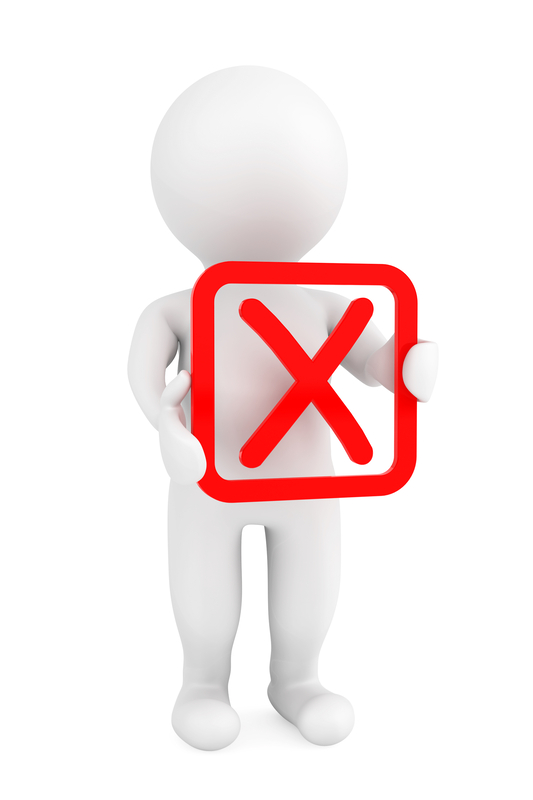- Essential Bookkeeping Habits For Audit Ready Books in Canada
- GST HST In Canada
Small Business Information About
GST HST in Canada
By L.Kenway BComm CPB Retired
This is the year you get all your ducks in a row! Start by starting.
Edited August 23, 2025 | Revised April 9, 2024 | Updated January 6, 2024 | Originally published on Bookkeeping-Essentials.com in 2010
JUMP TO:
Table of Contents | Introduction to GST HST | Quick Links to Common Questions | FAQ
NEXT IN SERIES >> GST HST Registrations
CANADIAN SALES TAX GUIDE
Harmonized sales tax is a more competitive tax than provincial sales tax as input tax credits flow through to make the tax neutral for most commercial activities. The consumer is the one who pays the tax.
 Online accounting software makes the bookkeeping for GST HST easier.
Online accounting software makes the bookkeeping for GST HST easier.Questions you may have about GST HST in Canada?
- How Do You Calculate GST/HST Included In A Purchase Amount?
- What is the Special 90% Rule for GST HST Collection?
- What is my GST filing deadline?
- What is the annual input tax credit adjustment for meals I need to make?
Background information to help you understand why we have GST HST in Canada
- The Canadian Tax System: A Brief Overview
- What is GST HST? What is VAT?
- Why was GST HST introduced in Canada?
- How is HST a different tax than PST?
- Compare and Contrast GST/HST and PST/RST: You decide which taxation method is better
- VAT versus Tariffs: Can tariffs be a consumption tax?
Canadian Sales Tax Guide
PST GST HST In Canada - Table of Contents
Other articles on PST GST HST in Canada when you are ready.
GST HST Special 90% Rule | Place of Supply Rule
There is a special rule for collection of GST HST in Canada that says if 90% or more of your supplies (sales to customers) were made through your permanent establishment (where your business resides), you can assume all supplies (sales to customers) were made in that province and use the appropriate participating (HST) /non-participating (GST) sales tax rate.
Insight Into Canada's Tax System and GST HST
The Canadian Tax System: A Brief Overview
The taxation framework in Canada is designed as a progressive system, meaning that those who earn more are expected to pay more in taxes. This system aims to ensure a balanced distribution of wealth across society and funds public services such as health care, education, infrastructure, and social security. When businesses participate in the underground economy, they are sidestepping their fair share of funding these public services they use.
Canadian taxes are administered at both federal and provincial/territorial levels. The federal government collects personal income tax, corporate tax, and the federal portion (GST) of the sales tax. Provincial or territorial governments collect taxes on properties, payroll, and the provincial portion (PST) of the sales tax. In some provinces, federal and provincial taxes are combined into a Harmonized Sales Tax (HST).
Income tax forms the bulk of the government's revenue. It includes personal income tax levied on wages, salaries, and other forms of income and corporate tax levied on a company's profits. Canada also has an international tax system that holds liability for its residents' worldwide income.
Understanding GST/HST: A Brief Overview
One notable aspect of the Canadian tax system is the Goods and Services Tax (GST) and the Harmonized Sales Tax (HST). GST is a federal value-added tax, meaning that it applies to most goods and services sold or provided in Canada. The standard GST rate is currently 5%.
The HST is a combined tax structure that merges the federal GST and the provincial sales tax. It's implemented in certain provinces called the "participating provinces". These include New Brunswick, Newfoundland and Labrador, Nova Scotia, Ontario, and Prince Edward Island. The HST rates vary among these provinces, ranging from 13% to 15%, as they include the 5% GST plus the respective provincial sales tax.
The GST HST provides a significant revenue stream for the Canadian government. Various businesses collect this tax and remit it to the government. Small businesses, however, may be exempt from this collection obligation if they qualify as 'small suppliers'.
In essence, the Canadian tax system is a multifaceted mechanism designed to promote social and economic balance. Understanding this system, particularly the GST and HST, is pivotal for every business operating in Canada.
GST HST in Canada
What is GST HST? What is VAT?
You may know you pay GST HST when you are out and about, but as a small business owner, do you actually know what GST HST in Canada is besides an administrative burden you must carry?
Goods and services tax (GST) is a value-added tax (VAT) on goods and services produced by businesses. This tax is passed along to the consumers of the products and services, so sometimes it is also referred to as a consumption tax (as opposed to income tax, which is a tax on your earnings).
Harmonized sales tax is a combination of the federal GST along with a provincial sales tax component. Instead of two separate taxes, it is a single value-added tax. The HST is administered by the federal government who then remits to each participating province.
Businesses operating in Canada that are GST HST registrants are responsible for collecting both taxes and remitting the tax funds to the government ... which means they, not the government, bear the costs associated with the collection.
MORE >> What is a non-participating province? What is a participating province?
GST HST In Canada Background
Why GST HST was Introduced In Canada
How To Calculate GST/HST Included in a Purchase Amount
Let me show you how to find the GST/HST paid in a transaction.
Let's say you have a business in Ontario and purchased an itemthat cost $226.00 including sales tax. Sales tax in Ontario is 13% HST.
You want to know how much of that $226.00 is sales tax as it is not showing on the receipt. Here's how you do it.
$226.00 (total purchase amount) / 1.13 = $200.00 (purchase price excluding sales tax) where / means divide. $200 x .13 = $26.00 (amount of HST paid) where x means multiply.
If you want to skip the 2 step calculation and go right to calculating just the sales tax paid, multiply $226 by .11504 where .11504 = .13/1.13 and round to 2 decimal points
If you live in a different province, replace .13 with your sales tax amount.
I don't know about you, but I like to understand the WHY of things. It helps me better understand the issue. It's also important for a business owner to understand the Canadian tax sales system because it may influence your prices, especially if you import-export goods and services.
So why was GST HST introduced in Canada?
Canada adopted GST in 1991 to replace the manufacturers' sales tax, which taxed the total resale value of a manufacturer's goods, not just the value added, similar to Canada's current carbon tax.
VAT is seen as a regressive tax ... if not combined with other tax strategies.
Wikipedia describes a regressive tax as one that "imposes a greater burden (relative to resources) on the poor than on the rich - and there is an inverse relationship between the tax rate and the taxpayer's ability to pay as measured by assets, consumption, or income.
Given Wikipedia's definition, I find it interesting that VAT would be considered a regressive tax in Canada.
I have always thought of GST as a fairer tax than income tax because, unlike income tax, everyone has to pay it - rich or poor. The rich have more discretionary income, so they spend more and pay more tax.
The poor and working poor have less to spend, so they pay less. When you factor in the other tax strategies in place in Canada, such as:
- zero-rated and exempt-rated goods and services, which include the most basic needs along with
- the GST HST credit lower-income taxpayers receive (if they filed a tax return)
GST HST in Canada is applied mainly to discretionary income that the consumer has control over, so GST becomes more progressive than regressive, especially when compared to income taxes. It's also a transparent tax not hidden in the price of processes upstream and downstream of a product.
GST HST is a Good Tax
If you are interested in a more theoretical debate on GST HST in Canada, I have found two articles of interest.
The first is a great article written by David Sherman, a leading GST tax expert in Canada and a tax lawyer.
One of the points in his introduction explains that the United States is one of the few countries in the world that does not have a value-added tax. Later in his article (the section entitled: Tax-Included Pricing Is Better for the Economy), Mr. Sherman explains that tax experts and economists almost universally agree that GST is a "good" tax.
The article is on page 839 of the October 2009 Canadian Tax Journal publication titled Policy Forum: Tax-Included Pricing for HST-Are We There Yet?. It is available at
http://www.ctf.ca/ctfweb/Documents/PDF/2009ctj/09ctj4-policy.pdf.
Jack Millar authors the second article. He wrote an article for the Canadian Tax Foundation in October 2009, presenting his case for maintaining tax-exclusive pricing. The article is titled Policy Forum: The Case for Maintaining Tax-Exclusive Pricing.
Mr. Millar points out that tax-exclusive pricing results in greater political accountability through increased tax consciousness by taxpayers. The article can be located at
http://www.ctf.ca/ctfweb/Documents/PDF/2010ctj/10ctj1-millar.pdf.
GST HST In Canada
How HST is A different Tax than PST
Understanding the difference between these two types of tax helped my bookkeeping. Here's a brief review to help you understand how the two taxes work differently.
The two taxes have different objectives and, therefore, different effects. GST HST in Canada is considered a sales tax or a consumption tax, as is PST.
GST HST is a value-added sales tax (VAT) that applies to the final consumption of goods AND services. It increases the price of most goods and services to the end consumer. However, it is neutral to businesses because suppliers can claim an input tax credit to offset it against GST HST charged on sales. It is a visible tax, not a hidden tax.
PST is a retail sales tax (RST) that applies to the final consumption of goods AND services. It increases the price of most goods and services to the end consumer.
In general, sales taxes are not selective in what they tax. The purpose of a sales tax is to raise revenue. Sales taxes do not distort consumer behaviour because they apply broadly and evenly, making them less damaging to the economy.
David Robertson, a tax lawyer with EY Law LLP (previously with Fasken Martineau), presented a paper in September 2005 at the CICA Commodity Tax Symposium, Sales Tax Harmonization: The Facts & Nothing But The Facts.
The article concluded that VAT wins when compared to RST.
"As to the choice between which system is better, it is clear that the value-added tax system is superior as it (a) is more equitable, (b) less regressive, (c) minimizes cascading and double taxation, (d) promotes international competitiveness and domestic prosperity, and (e) is less susceptible to evasion."
As Frances Woolley stated in the article, Comparing the HST with retail sales taxes, "Basic micro-economic analysis suggests that a tax on two goods at a lower rate is better than a tax on one good at a higher rate. ... If only goods are taxed, people's choices are distorted by the tax, and they will substitute services for goods, for example, going out to restaurants more often rather than buying a new food processor to make meals quickly and easily at home. However if both goods and services are taxed equally, people's consumption choices aren't distorted – there is no substitution effect. This means that people can achieve a higher level of utility – get on a higher indifference curve – while the government can raise the same amount of tax revenue."
Compare and Contrast GST HST In Canada to PST/RST
You Decide Which Taxation Method Is Better
B.C. transitioned back to reimplementing PST in April 2013 after losing a 2011 referendum vote. I thought a discussion of the two different taxation methods would help small business owners and bookkeepers specializing in small businesses understand the difference between the two types of sale tax.
Even after the referendum in August 2011, there was still much discussion and opinion on whether HST is a good or bad tax, whether people were for or against it or just wanted to maintain the status quo.
Here are just a few facts I've found when you compare provincial sales taxes to harmonized sales taxes.
1. Consumer and Business Spending
One difference between the taxes is that GST/HST taxes consumer spending because it is a multi-stage tax that prevents double taxation and tax cascading, while PST/RST taxes consumer and business spending because it is a single-stage tax that creates double taxation and tax cascading.
Double taxation occurs when a business purchases goods and services that have PST/RST, then charges and collects PST/RST when they sell the good or service .. effectively taxing the product twice ... and taxing a tax.
Tax cascading occurs when the business owner raises the price of a product or service to cover the cost of the PST/RST, so the VAT becomes embedded in the sales price.
2. Neutrality
Another difference between the taxes is that GST/HST taxes all types of properties and services in the same way and does not influence or favour one industry over another. PST/RST, on the other hand, taxes properties and services differently, which discriminates between industries and sectors.
Professional services are an example of this in B.C. Legal services have to charge PST, but accounting services do not. HST levels the playing field; all professional services will charge HST. As BC reimplemented PST, the taxation for professional services reverted back to pre-HST days.
3. International Competitiveness and the Two Tax Types
GST/HST removes tax from capital purchases and export sales, leading to higher productivity and greater competitiveness ... PST/RST increases the domestic selling price due to tax cascading, reducing export competitiveness.
I understand this to mean that GST/HST increases productivity and sales, creating jobs that increase or maintain our standard of living, while PST/RST puts us at a disadvantage in international and domestic markets if one province has GST/HST and another PST/RST.
This means that when Ontario opted for HST, B.C. was left with no option but to embrace HST if they did not want businesses (and jobs) to move to Ontario, where double taxation and tax cascading would disappear under HST. However, the residents of B.C. did not see it that way when the referendum vote was lost.
When B.C. reimplemented PST, it became disadvantaged in attracting and keeping capital investments in B.C. unless some changes were made. An article in the Vancouver Sun on September 2012 titled "Panel calls for PST relief for businesses in B.C." outlined the findings from the Expert Panel on B.C.'s Business Tax Competitiveness. They are presented here.
- The higher costs businesses will bear in reimplementing PST in B.C. will be passed onto consumers. Businesses that have a choice on where to invest will likely look elsewhere.
- To reduce the likelihood of that occurring, the Panel recommended an investment tax credit claimable over two years to level the playing field with other provinces. They are also recommending a half-percent rise to corporate tax rates, with the idea that it is better to tax profits than investments.
- The Panel also recommended widening the PST tax base by charging PST on phone and cable services, school supplies, snack foods, and increasing tobacco taxes.
- The idea of a Business Transfer Tax was introduced but was expected not to be embraced, given that it was an election year.
The Fraser Institute published a 2019 report, Assessing British Columbia's Tax Competitiveness. It discusses the significant tax competitiveness issues facing B.C., particularly concerning the tax treatment of businesses in the province. The provincial government implemented a wide range of tax increases, such as the corporate income tax rate, the top personal income tax rate, the property transfer tax, and the carbon tax rate, which is currently the highest in North America. It also introduced a new payroll tax to fund health services. These tax measures add to the costs of investing in the province.
The Fraser Institute discusses how the increase in the corporate income tax (CIT) rate has exacerbated the business investment competitiveness problems created in the province by the existence of a provincial sales tax on business inputs. The CIT increases wiped out a reduction made in 2008 designed to partly offset the effects on business competitiveness from the implementation of a carbon tax.
The points made are from my notes on Mr. Robertson's paper Sales Tax Harmonization: The Facts & Nothing But The Facts. His paper was presented in September 2005 at the CICA Commodity Tax Symposium . This paper is no longer available online.
FAQ About GSH HST in Canada

What is harmonized sales tax and when did it come into play?
What is harmonized sales tax and when did it come into play?
Harmonized sales tax (HST) is a combination of federal goods and services tax (GST) and provinces who previously charged provincial sales tax (PST).
Its purpose was to reduce the administrative burden on small businesses around collecting and remitting sales taxes. Combining GST and PST in provinces that chose to participate was the first step to creating a consistent tax across the country.
It came into effect on July 1, 2010. During the first week of May 2010, harmonized sales tax transitioning rules went into play.
In 2010, if you were already registered for GST, you were automatically registered for HST. The thresholds for HST remained the same as for GST ... $30,000.
BC initially transitioned to HST in 2010 but a referendum required BC to re-implement PST + GST on April 1, 2013. On the same date, Prince Edward Island implemented HST.
Quebec harmonized with GST on January 1, 2013. However, it is important to note that Quebec is NOT classified as a participating province. PST is no longer charged on GST. Financial services are also exempt instead of zero rated.
Is it necessary for a bookkeeper to understand how sales taxes - PST GST HST in Canada are applied?
Is it necessary for a bookkeeper to understand how sales taxes - PST GST HST in Canada are applied?
The short answer is yes.
I attended a webinar titled A Deeper Tax Knowledge; sponsored by Institute of Professional Bookkeepers of Canada - IPBC [rebranded as Canadian Professional Bookkeepers of Canada] in April 2010. The speaker was the esteemed Evelyn Jacks of The Knowledge Bureau.
One of the topics discussed was the necessity for a bookkeeper to understand how sales taxes in Canada are applied.
Bookkeepers need to know what documents to collect to ensure their recordkeeping is in compliance with Canadian tax laws. They need to know and apply the rules for accurate data entry.
Regular reporting and remitting of sales tax collected is mandatory. Failure to prepare or store the necessary documents may lead to costly fines and penalties to the small business owner as well as the stress of being audited.
Did tax on services increase when HST was implemented?
Did tax on services increase when HST was implemented?
Professional services like accounting and bookkeeping fell through the cracks under PST. So while taxes on services were increased with the implementation of HST, the input tax credits offset which reduced the regressiveness of the tax somewhat.
Do provincial governments and foreign diplomats pay GST HST?
Do provincial governments and foreign diplomats pay GST HST?
When HST came into effect on July 1, 2010, provincial governments began paying the harmonized sales tax upfront on all of its purchases and claim a rebate from CRA for eligible HST amounts.
This meant businesses no longer had to separate government purchases. Ontario HST Information Notice 6 has more information on how this worked.
Its important to note foreign diplomats are not exempt from collecting or paying GST or HST.
How do you setup your books if you are not a GST HST registrant in Canada?
How do you setup your books if you are not a GST HST registrant in Canada?
If the business owner is NOT a GST/HST registrant, you set up your books a little differently as you don't need to track your goods and services tax or your harmonized sales tax paid.
If you are not an HST/GST registrant, you will NOT be collecting GST (and should not as you are not authorized to). This means you do not qualify for input tax credits so there is no need for your accounting system to track the sales tax you pay.
In this case, when you record any purchase or expense that has sales taxes, the sales tax amount is either expensed or capitalized.
For example, if you purchased printer toner for $150 before taxes, you would record $168 to the expense account Office Supplies if you lived in BC (GST = 5% and PST = 7%). In Saskatchewan, the amount would be $166.50 (because the PST rate is 6%).
GST HST in Canada Tip
Even though you don't have to, you may want to track how much GST tax you are paying ... so you can see how much money you are leaving on the table by not registering for GST/HST.
To track your GST tax expense separately, create an expense account called Sales Taxes or GST Paid. In the QuickBooks® accounting system, the account setup is done through your chart of accounts.
Each time you purchase something, you would code the GST amount (not the PST) to this expense account. This is one of the ways of how to use QuickBooks® to give you management information to run your business.
Were there any exemptions or point of sale rebates when provinces transitioned to HST?
Were there any exemptions or point of sale rebates when provinces transitioned to HST?
Both BC and Ontario had HST exemptions just like they did with GST. They also introduced point of sale rebates for certain items on the provincial portion of the harmonized sales tax. BC point of sale rebates were slightly different than Ontario point of sale rebates.
For the short time HST was in effect in BC, BC residents, unlike Ontario residents, received a residential energy rebate.
The new housing rebate was made available on new homes purchased as a principal residence in Ontario and BC. Ontario also introduced a new rental housing rebate.
Just a reminder that US sales are generally zero rated supplies ... which is different than exempt supplies.
Insurance Premiums, Hotel Room Tax, Alcohol, Private Vehicle Sales
Insurance Premiums, Hotel Room Tax, Alcohol, Private Vehicle Sales
As Ontario transitioned to HST, insurance in Ontario continued to attract RST. Insurance businesses were automatically registered, while others needed to register before June 30, 2010.
BC's insurance premiums were exempt from HST.
Hotel room tax and alcohol tax was replaced with the harmonized sales tax while private vehicle sales are still charged provincial sales tax. That includes private sales of boats and aircraft in BC.
How does HST affect businesses in non-participating provinces like Alberta, Saskatchewan, and Manitoba?
How does HST affect businesses in non-participating provinces like Alberta, Saskatchewan, and Manitoba?
C. Stuart McKelvie, FCA wrote an excellent article in the Winnipeg Free Press on June 26, 2010. Every business owner in Alberta, Saskatchewan, Manitoba, and PEI should take to time to read .
Coming HST not an issue here? Think again discussed:
- how the new place of rules affect your business;
- how are cash sales charged;
- how invoicing requirements ... and possibly the charging of harmonized sales tax ... change when the sale is over $150;
- the threes instances when your participating province customers needs to self assess HST ... in 2010 that would have been customers from BC, Ontario, New Brunswick, Nova Scotia, Newfoundland and Labrador;
- when a business doesn't have to self-assess harmonized sales tax ... learn about the 90% rule;
- how to recover your input tax credits; and
- what to do if you are charged the wrong amount of sales tax.
This excellent article is located at www.winnipegfreepress.com> Business> coming-hst-not-an-issue-here-think-again-97216964.html .
How does bookkeeping software make tracking GST HST in Canada easier for a small business owner?
How does bookkeeping software make tracking GST HST in Canada easier for a small business owner?
Here's how I think bookkeeping software makes tracking GST HST in Canada significantly easier and more efficient:
1. Automated Calculations: With bookkeeping software like QuickBooks Online Canada, businesses can automate the calculation of GST HST on their sales and purchases.
2. Tracking: The software can keep track of all the GST HST charged on sales and paid on purchases throughout the financial year. This removes the need for you to manually track and calculate this data, saving you time and reducing the likelihood of human error.
3. Reports: Bookkeeping software generates these wonderful reports that provide summaries of the amounts of GST HST collected and paid out. This simplifies the process of preparing tax returns. You can also drill down to get the details during an audit or print the detailed GST HST report. QuickBooks Online Canada even has an Exceptions Report if the GST HST claimed in prior periods has changed.
4. Compliance: Using software helps you ensure that your GST HST tracking is compliant with Canada Revenue Agency (CRA) rules and regulations, by standardizing the way you record and report these transactions.
5. Digitized Records: The software also neatly organizes and stores all your transaction records digitally. This helps in audit situations, and also makes accessing any past transactions quick and easy. I also like I can create financial statements comparing the current year to the prior year. That feature is a great analysis tool.
6. Integration: If your business uses other financial or operational software, you can usually integrate it with your bookkeeping software. This connectivity aids in real-time tracking of the GST HST throughout your financial or supply chain.
By helping track and manage GST HST through these methods, bookkeeping software can play an essential role in simplifying the accounting process and ensuring accuracy.
- Essential Bookkeeping Habits For Audit Ready Books in Canada
- GST HST In Canada
















